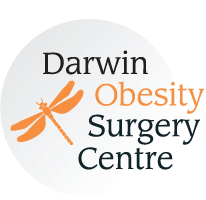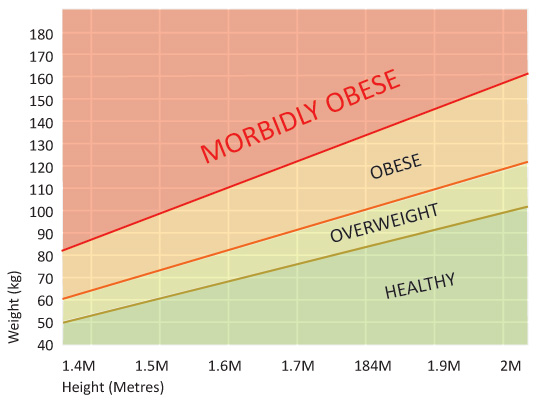

NON SURGICAL OPTIONS
|
CRITERIA FOR MOBID OBESITY
There are several medically accepted criteria for defining morbid obesity.
You are likely to be morbidly obese if you:
are more than 45 kg over your ideal body weight, or
have a Body Mass Index BMI of over 40, or
have a Body Mass Index BMI of over 35 and are experiencing severe negative health effects (known medically as co-morbidities), such as high blood pressure or diabetes, related to being severely overweight
are unable to achieve a healthy body weight for a sustained period of time, even through medically supervised dieting

NON SURGICAL OPTIONS
For anyone who has considered a weight loss program, there is certainly no shortage of choices. Most non-surgical weight loss programs are based on some combination of diet/behavior modification and regular exercise.
Unfortunately, even the most effective interventions have proven to be effective for only a small percentage of patients. Research has shown that non-operative methods alone have not been effective in achieving significant long-term weight loss in severely obese adults.
DIET AND EXERCISE
In 2002, Australian researchers reviewed the effectiveness of treatments available for severe or 'morbid' obesity and concluded that surgery was the only effective option available at the time of the report.
DIET AND BEHAVIOUR MODIFICATION
There are literally hundreds of weight loss diets available. Doctors who prescribe and supervise diets for their patients usually create a customized program with the goal of greatly restricting calorie intake while maintaining nutrition.
These diets fall into two basic categories:
Low-Calorie Diets (LCDs)
are individually planned so that the patient takes in 500 to 1,000 fewer calories a day than he or she burns.
Very-Low-Calorie Diets (VLCDs)
typically limit caloric intake to 400 to 800 a day and feature high-protein, low-fat liquids. Studies show that the long-term results of Very-Low-Calorie Diets (VLCDs) vary widely, but weight regain is common. (9)
BEHAVIOUR MODIFICATION
uses therapy to help patients change their eating and exercise habits. Combining a Very-Low-Calorie Diet (VLCD) with behavior therapy and physical activity may help increase weight loss and slow weight regain. In the long term, however, Very-Low-Calorie Diets (VLCDs) are no more effective than more modest dietary restrictions.
If diet and behavior modifications have failed you and surgery is your next option, it is important to understand that diet and behavior modification will be instrumental to sustained weight loss after your surgery. The surgery itself is only a tool to get your body started losing weight - complying with diet and behavior modifications required by most surgeons would determine your ultimate success.
EXERCISE
Starting an exercise program can be especially intimidating for someone suffering from morbid obesity. Your health condition may make any level of physical exertion next to impossible. The benefits of exercise are clear, however. And there are ways to get started.
A 1997 National Health and Medical Research Council report concluded that exercise:
alone without caloric restriction results in small amounts of weight loss
can protect against muscle loss during caloric restriction therapies
increases resting metabolic rates and reliance on fat oxidation at rest
has beneficial effects on hypertension and cholesterol levels
can help stabilise weight loss and maintain lower weight levels
It is important before increasing your physical activity levels that you consult a health care professional who can create an individual program appropriate to your individual circumstances.
The same National Health and Medical Research Council report recommended three considerations when increasing physical activity as part of a weight loss program: (10)
Close monitoring is essential to prevent muscular or skeletal injury
Programs should be tailored to the individual, using activities that a person enjoys
Continued dietary restraint (especially fatty foods) and education are critical to effective weight loss.
![]()
SURGICAL OPTIONS
Clinical data will vary for each of the different weight loss procedures mentioned on this site. Results may also vary by bariatric surgeon. Ask your doctor for the clinical data stating their results for the procedure they are recommending.
A review of obesity surgery studies by Australian experts comparing laparoscopic adjustable gastric banding, laparoscopic sleeve gastrectomy and Roux-en-Y gastric bypass found all three procedures to be effective in producing weight loss in patients during the follow-up periods reported. The endoscopic procedure Intra-Gastric Balloon is also a proven effective treatment for both Morbid Obesity and Type 2 Diabetes with Obesity.
 SUPPORT GROUPS
SUPPORT GROUPS
The widespread use of support groups has provided weight loss surgery patients an excellent opportunity to discuss their various personal and professional issues.
Most learn, for example, that weight loss surgery will not immediately resolve existing emotional issues or heal the years of damage that morbid obesity might have inflicted on their emotional well-being.
Most surgeons have support groups in place to assist you with short-term and long-term questions and needs.
Most bariatric surgeons who frequently perform weight loss surgery will tell you that ongoing post-surgical support helps produce the greatest level of success for their patients.
Darwin Obesity Surgery Centre
Darwin Private Hospital
Rocklands Drive
TIWI NT 0810
Phone (08) 7981 5694
Facsimile (08) 7981 5698
Laparoscopic Surgery in Darwin Weight Loss Surgery for Morbid Obesity Surgical Procedures for Morbid Obesity |
Weightloss options for Morbid Obeisty Laparosocopic (Keyhole) Surgery for Severe Obesity Endoscopic (Telescope) Surgery for Severe Obesity |
Darwin Weight Loss Surgery Diabetes and Obesity in Darwin Weight Loss Surgery in Darwin |